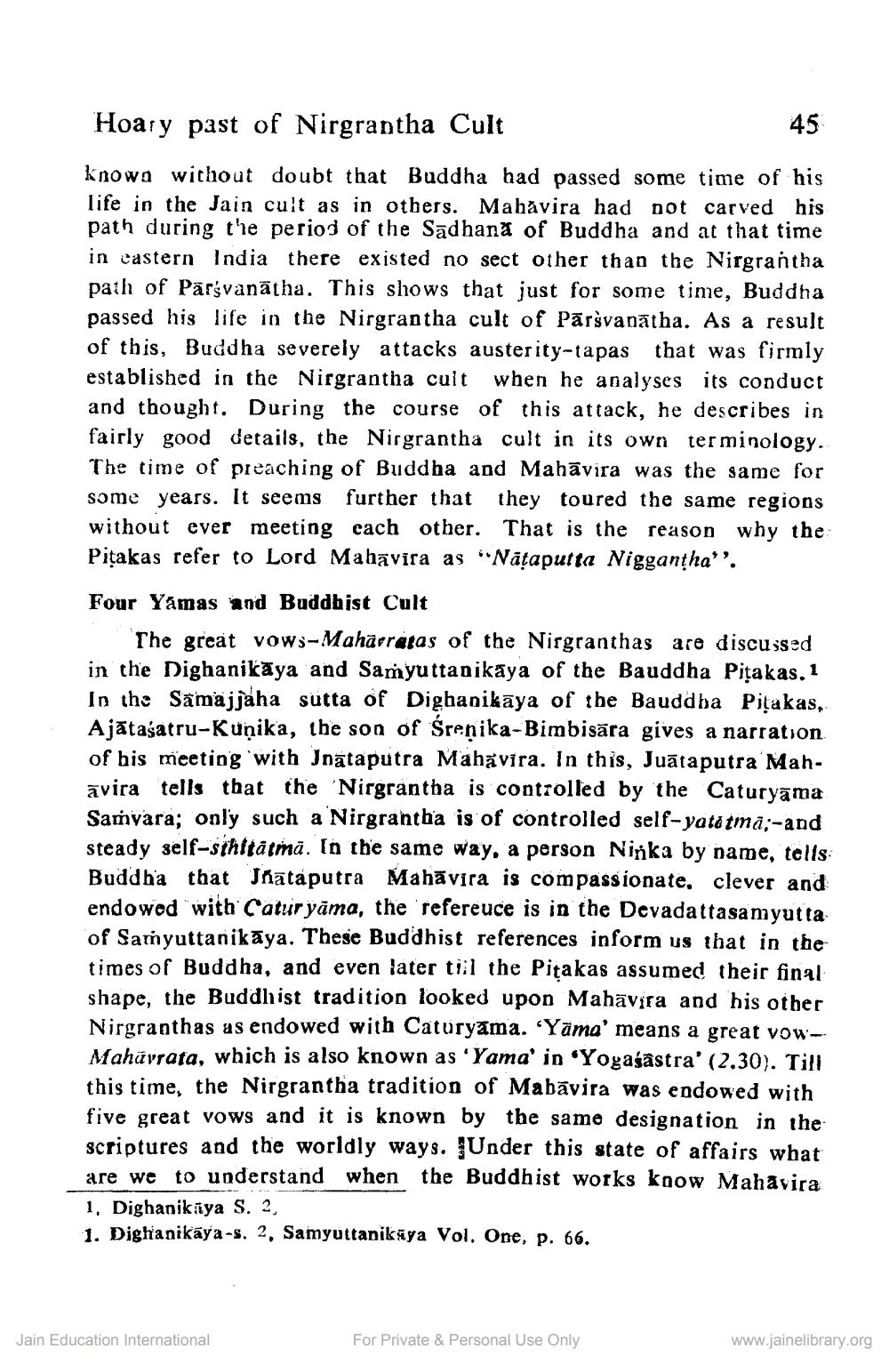________________
Hoary past of Nirgrantha Cult
45
knowo without doubt that Buddha had passed some time of his life in the Jain cult as in others. Mahavira had not carved his path during the period of the Sadhana of Buddha and at that time in eastern India there existed no sect other than the Nirgrantha path of Pārsvanātha. This shows that just for some time, Buddha passed his life in the Nirgrantha cult of Pārsvanātha. As a result of this, Buddha severely attacks austerity-tapas that was firmly established in the Nirgrantha cuit when he analyses its conduct and thought. During the course of this attack, he describes in fairly good details, the Nirgrantha cult in its own terminology. The time of preaching of Buddha and Mahāvira was the same for some years. It seems further that they toured the same regions without ever meeting cach other. That is the reason why the Pitakas refer to Lord Mahavira as “Nätaputta Niggantha''.
Four Yamas and Buddhist Cult
The great vows-Maharratas of the Nirgranthas are discussed in the Dighanikāya and Samyuttanikaya of the Bauddha Pițakas. 1 In the Sämajjaha sutta of Dighanikaya of the Bauddba Pitakas, Ajātasatru-Kuņika, the son of Sreņika-Bimbisāra gives a narration of his meeting with Jnātaputra Mahävira. In this, Juātaputra Mahavira tells that the Nirgrantha is controlled by the Caturyāma Samyara; only such a Nirgrantba is of controlled self-yato tmā;-and steady self-sthitātmā. In the same way, a person Ninka by name, tells Buddha that Jhātaputra Mahāvira is compassionate, clever and endowed with Catur yāma, the 'refereuce is in the Devadattasam yutta of Samyuttanikāya. These Buddhist references inform us that in the times of Buddha, and even later till the Pitakas assumed their final shape. the Buddhist tradition looked upon Mahavira and his other Nireranthas as endowed with Caturyama. "Yama' means a great vowMahāyrata, which is also known as 'Yama' in "Yogasastra' (2.30). Till this time, the Nirgrantha tradition of Mabāvira was endowed with five great vows and it is known by the same designation in the scriptures and the worldly ways. ¡Under this state of affairs what are we to understand when the Buddhist works kaow Mahavira 1, Dighanikaya S. 2, 1. Dighanikaya-s. 2. Samyuttanikaya Vol. One, p. 66.
Jain Education International
For Private & Personal Use Only
www.jainelibrary.org




